Most search marketers agree that content marketing and SEO are inseparable. Many, unfortunately, fail to understand the full scope of that synergy.
In doing so, they limit their opportunities to gain significant search visibility. Plus, miss the opportunity to align their brand with their customer's journey.
For most SEOs, content is nothing but pages they can optimize and rank for their desired keywords.
As a result, they rarely look into how their work could help shape the organizations content strategy in turn and boost its bottom line.
In this post, I’ll show you how to overcome this for your organization. You’ll learn how to use SEO data to create a content strategy that will meet your audience’s demands.
Why Content Must Target Specific Customer Needs
We create ridiculous amounts of content.
A quick glance at content marketing stats can easily make your head spin with confusion. For example:
- On average, brands publish more than 2 million blog posts every day.
- According to Wordpress, more than 409 million people view over 22.9 billion pages each month.
- Wordpress also reports that their users create over 82.6 million new posts each month.
The situation is no different with other media. In just one minute, users send 347,000 new tweets and upload 300 hours of video to YouTube.
That’s a lot of noise. And it has a crushing effect on your content strategy.
The only way to break through it all is by being specific. Only by delivering on your audience’s needs for information and positioning the content along their path to purchase you can ensure that your content will reach the audience.
How SEO Data Can Shape the Content Strategy
The hardest part of writing SEO content isn’t coming up with the actual strategy. Nor is it identifying the best content types or figuring out how to distribute your assets.
The biggest challenge lies in understanding the actual audience’s needs –identifying what information or advice they currently seek.
And with 5.5 billion searches conducted every single day on Google, it’s hard to imagine a better source of such insight than the data that comes directly from what they search.
Today’s customers google almost everything.
Google’s analysis of search patterns, particularly on mobile devices, revealed that users even search for products like bottled water or salt. Products, worth to note, we’d always associated with quick, in the moment purchases.
But customers research more than information to inform the buying decisions. They turn to search, again, often on smartphones, to fulfill the other three search intents:
- To know
- To do, and
- To go.
They use the first two to research and learn new information. Be it to discover how to fix a leaky tap or choose a new holiday destination; they turn to Google for help.
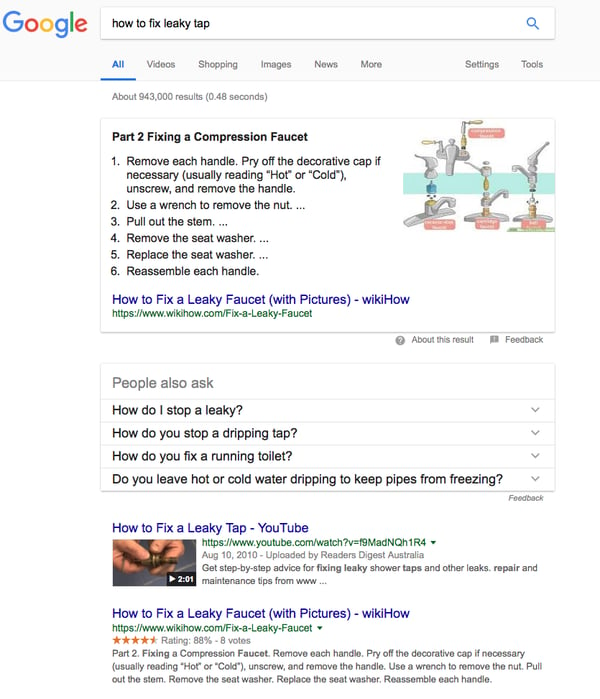
And when they plan to go somewhere and interact with the physical world, they exhibit the third intent – to go.
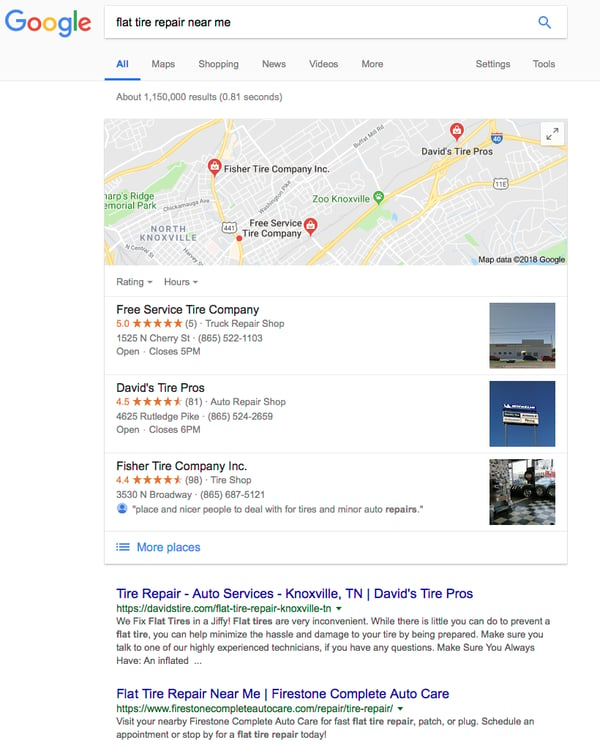
What’s important, though, is that each of those intents could lead to a purchase.
After all, a person researching ways to fix a leaky tap might actually end up calling a plumber. Trip planners looking for vacation ideas will eventually book the vacation.
Which brings us to how SEO data helps.
By revealing what information customers seek as they progress through their buying journey, it allows you to position your brand at every touchpoint. This, in turn, helps increase the possibility of reaching the end result -- conversion.
What SEO Data to Use, and How to Use It
We’ve covered a lot of theory so far. So, let’s discuss what specific data will help you develop a data-driven content strategy from SEO data.
#1. Understand Search Demand
Most keyword research tools let you analyze more than just the search volume. And anything from the audience’s search patterns, interests and additional information they search about the problem could help spark ideas to address the problem your customers seek with better content.
Here’s a quick example. From the report for the keyword, “content strategy” below, I can see the demand is focused on explanation about the strategy but also, creating one (i.e. “content development”) and even, implementing specific strategies (“social media content creation.”)
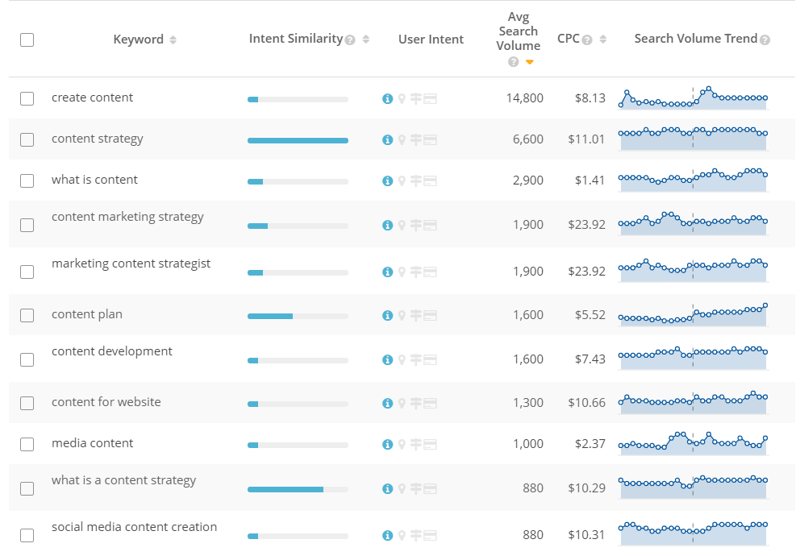
Based on such insight, I could do two things:
- Expand my content strategy page with such information.
- Turn it into a topic cluster and create individual pages with that additional information to increase my search visibility further.

#2. Improve Relevancy with Semantic Keywords
We no longer search in predictable ways. Instead, we use vague queries that we often refine as we learn more about the topic. In doing so, we put search engines at a serious disadvantage. They need to deliver the correct information based on what information is scarce.
For a content team, the problem lies in being able to identify those semantic keyword relationships -quite the difficult task if you're not a topic expert.
First, you need to identify and include more semantically related terms in your copy. Not only will you increase the chances of your content ranking for more relevant terms, you will also be able to impress the audience with more authoritative and expert-level content that better addresses audience need.
This is where semantic search comes into play – the search engine’s way to understand a person’s intent and the context for their search better.
To illustrate this, I often give the example of a writer who has never been to Chicago, tasked with describing the best things to do once in the city. Their research might unveil such attractions as Lake Michigan or the Willis Tower. But what about the Museum of Science and Industry, the famous pizza tours and the free Lincoln Park Zoo? Neither are wildly known. At the same time, including them on a page would increase the copy’s relevance and rankings significantly.
This is where SEO data can help too.
By analyzing search trends, you can uncover additional information that, once included, could provide more semantic meaning to your content, and boost its visibility in search.
And here’s one way to do it.
Tools like Content Ideas allow tapping into the most common questions their target customers ask online.
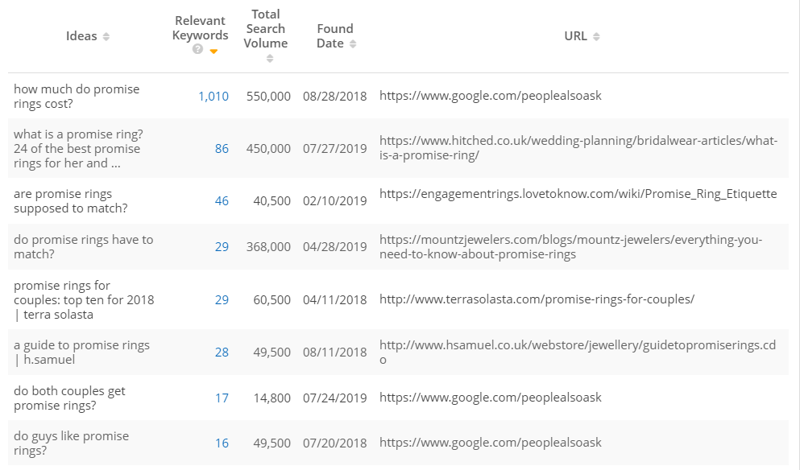
Identifying keywords behind those questions and analyzing them with Google Trends might suggest their popularity and help identify the most viable information to include.
But naturally, doing so requires an incredible amount of time and effort. Gathering all the information, analyzing and making sense of it, and then, selecting what’s truly important for your audience can take days, if not longer.
And that’s days you could be spending actually working on the content, delivering tangible results.
Good news - there’s a simpler way.
Understanding those challenges, we’ve created Content Fusion. This AI SEO content writing tool takes care of the entire process for you. It collects the data and analyzes your content to suggest what information could enrich it further.
In short, it helps you create truly authoritative content and always sounds like a topic expert, even if you’re not.
By combining web crawl data and billions of search- and content-specific data points with purpose-built deep learning algorithm, Content Fusion can uncover what additional information your audience would expect to find in the content you’re currently writing.
Let's take a look at the same term we searched above in Content Ideas and use that in Content Fusion.
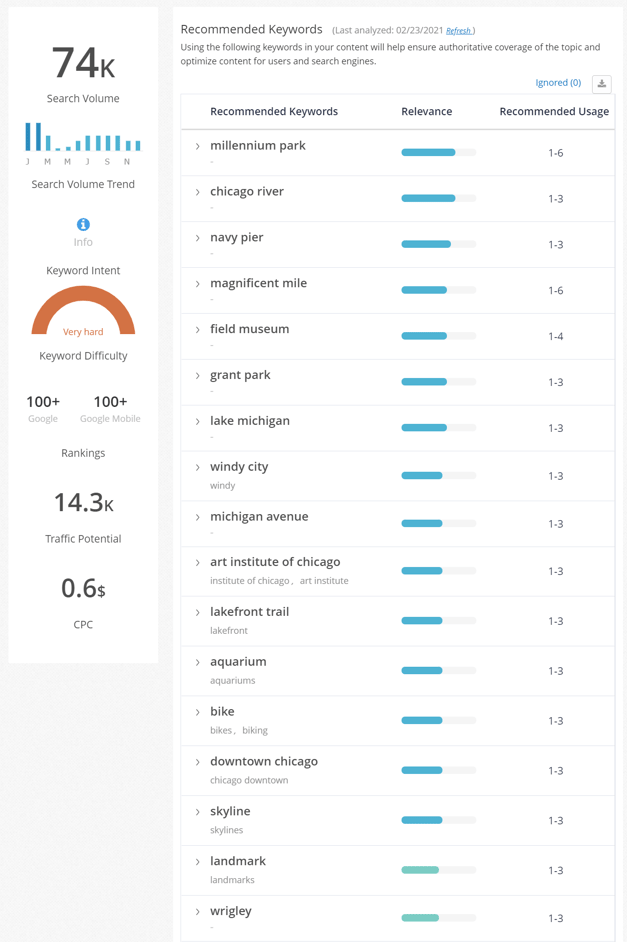
(Content Fusion report for "things to do in chicago".)
Semantic keywords provide context to the search query, allowing the engines to quickly understand what your content is about. Including these related terms in your copy would increase the relevance of the content and search visibility significantly.
#3. Close the Content Gaps
A major part of SEO work revolves around competitive intelligence. Be it analyzing the competitors’ link profiles or the on-page optimization; search marketers learn a ton about what works for other domains targeting the same audience.
One particular aspect of such research focuses on content gaps – identifying keywords that already drive traffic to one domain, but not the other.
Here’s an example. Take a look at the content gap between two offering the same products – office furniture.

There are over 21 thousand keyword opportunities between them that could drive more than a million potential visits.
Digging deeper would provide each with ideas for what content to create to attract that audience.
#4. Understand Your Content’s Performance
Finally, SEO insights could also reveal the success of your efforts. Plus, suggest new ideas how to boost them even further.
Looking at such metrics as the time on a page, conversions or how many pages a visitor views, on average, can tell you:
- How relevant they find your content?
- Is it aligned with their intent and stage of the buying cycle properly?
- How well does it move them further in the buyer’s journey?
These and many other questions can fuel ideas about additional pages you might be missing, information that the current one’s lack, and optimization for relevant keywords.
Closing Thoughts
Content marketing and SEO are truly inseparably. However, their synergy extends beyond just providing assets for search campaigns.
SEO data could help enrich content strategies too, and help organizations position their message along the entire buying journey to positively affect the bottom line.
Want to see more about how this works for your enterprise? Go ahead and schedule a demo with our team of experts who will walk you through the top-level benefits of using our platform.




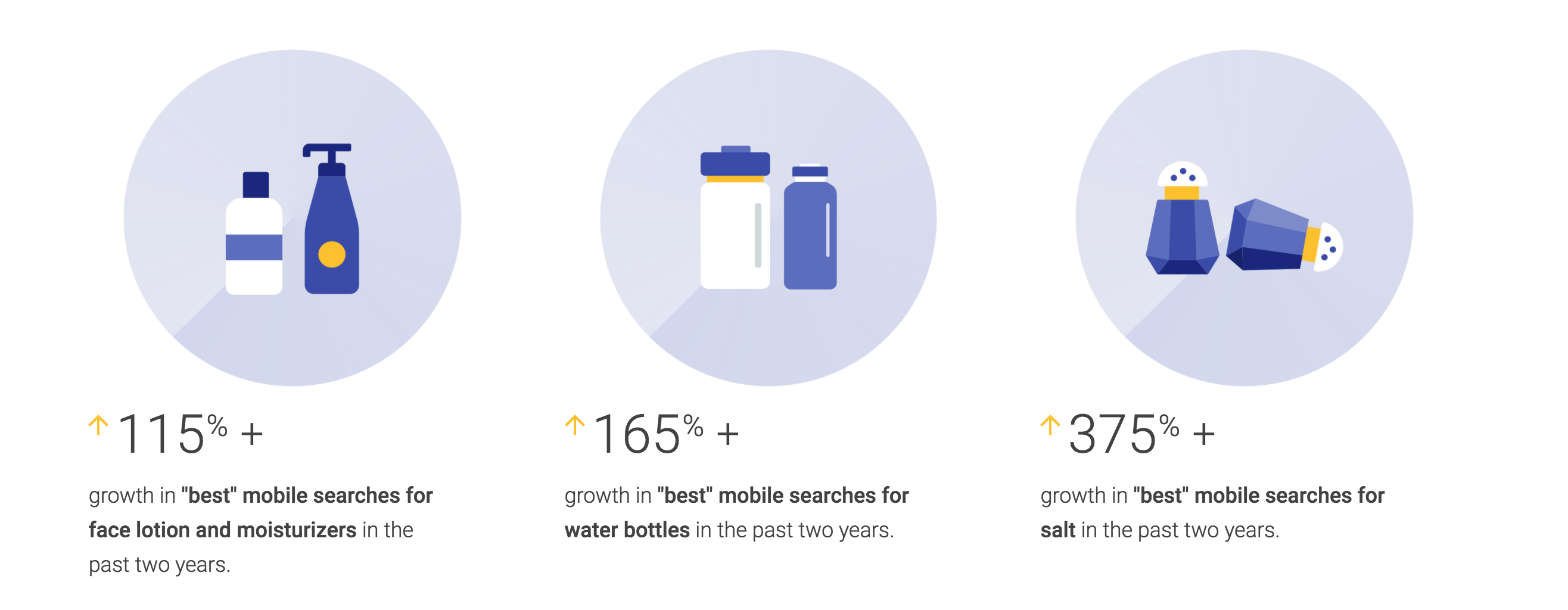





Comments
Currently, there are no comments. Be the first to post one!